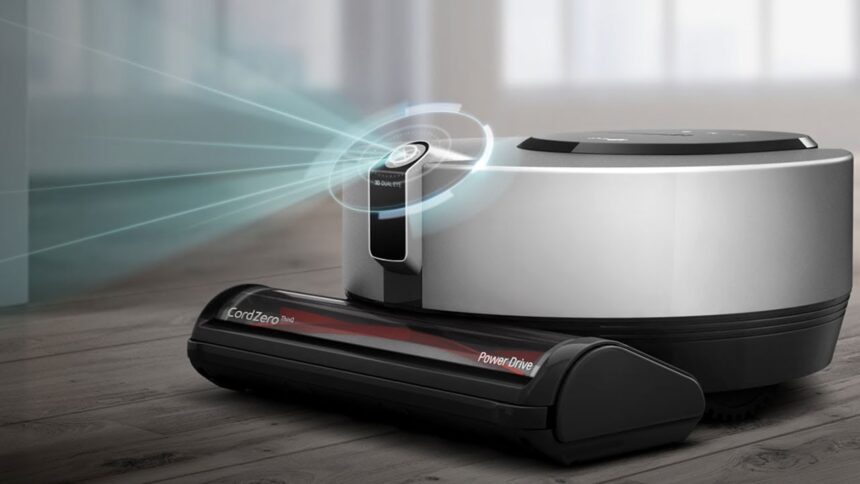Robot vacuums are becoming increasingly popular among busy homes seeking ease and efficiency in cleaning. They provide a hands-free cleaning experience, saving time and energy over traditional vacuum cleaners. However, with so many models available, it’s critical to understand what makes a robot vacuum worth investing in. Before making a purchase, think about your home’s layout, the sort of flooring you have, and the specific characteristics that fit your demands. This article will help you balance the advantages and downsides and select the best robot vacuum for your house.
How Do Robot Vacuums Compare to Traditional Vacuums?
Cost-Effectiveness and Value
Despite the fact that robot vacuums are often more expensive than standard vacuums when first purchased, the benefits of utilizing them quickly become obvious. By minimizing the amount of human work necessary, you might save hours of cleaning time each week. Additionally, many models use less energy and may be programmed to clean your home while you are gone. This is a really appealing feature. It is feasible that robot vacuums may be more cost-effective in the long term due to the amount of labor and maintenance required, despite the fact that ordinary vacuums may be less expensive at first. What makes them appealing is their ability to keep a tidy home with little assistance.
Maintenance and Ease of Use
Robot vacuums are intended to be low-maintenance; however, some care is necessary to keep them operating at top performance. Most models include automated dirt disposal and self-charging features, which make them more handy than regular vacuums. You will still need to clean the brushes on a regular basis, empty the dustbin, and check for blockages every now and again. The simplicity of use varies by type, with some including smartphone app controls for scheduling and monitoring. Overall, robot vacuums are extremely convenient, minimizing the physical effort necessary to clean.
Coverage and Cleaning Efficiency
A robotic vacuum’s coverage and cleaning effectiveness are determined by its sensors and design. Some models can easily clean big areas and maneuver around obstructions, whilst others may struggle with uneven surfaces or small places. High-quality robot vacuums use powerful mapping and navigation technology, allowing them to clean a home more effectively while avoiding repetitive runs over the same areas. However, they may not be as efficient in some conditions, such as deep cleaning carpets or cleaning behind heavy furniture. When choosing a robot vacuum, consider the layout of your home as well as the types of surfaces.
Key Features to Look for in a Robot Vacuum
Suction Power and Cleaning Performance
Suction power is one of the most significant considerations when selecting a robot vacuum. Strong suction allows the vacuum to effectively take up dirt, debris, and pet hair from a wide range of surfaces. While most robot vacuums are fine for light cleaning, if you have dogs or thick carpets, choose a model with more suction power. Many robot vacuums have changeable suction settings that allow you to change the power depending on the kind of floor. To achieve the best results, choose models that have high cleaning performance across numerous surface types.
Battery Life and Charging Time
Battery life is critical for robot vacuums, especially if you live in a large home. Most versions can operate for 60 to 120 minutes on a single charge. However, this varies depending on the vacuum’s strength and the area being cleaned. Larger or multi-story residences benefit from longer battery life. Also, consider the robot vacuum’s charging time. A quicker charging model allows you to get back to cleaning sooner, but lengthier charging intervals may need you to wait between usage. Efficient battery management keeps your robot vacuum running smoothly and maximizes its value.
Navigation and Mapping Technology
Navigation and mapping technologies are critical for effective cleaning. Advanced robot vacuums employ LIDAR, cameras, or infrared sensors to map your house and clean it in a methodical manner. These vacuum cleaners can detect obstructions, prevent collisions, and optimize cleaning pathways. Some versions also let you examine a map of your house via an app, allowing you to create cleaning zones and no-go zones. Basic models may lack these characteristics and rely on random cleaning patterns. Choose a robot vacuum with excellent navigation technology for accurate and thorough cleaning, even in complicated house layouts.
Conclusion
Before choosing a robot vacuum, consider cleaning efficiency, maintenance needs, and the unique features that will benefit your house. Consider your budget, the size of your area, and the surfaces you’ll need to clean. While robot vacuums can save time and effort, choosing the correct one for your needs will ensure the greatest results. Whether you’re looking for a model that excels in suction power or one with advanced mapping features, a well-chosen robot vacuum can improve your home’s cleanliness and ease of maintenance.


